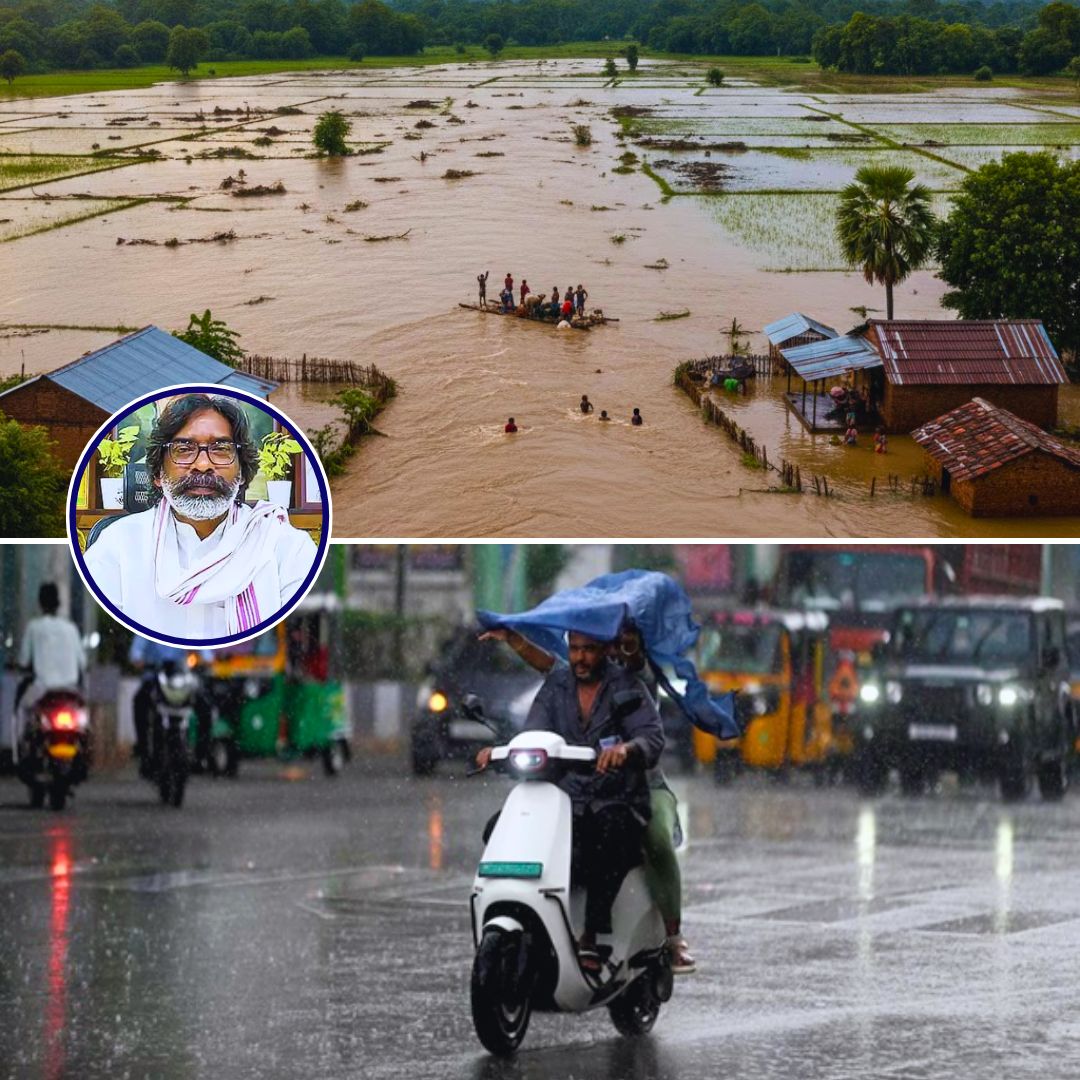Jharkhand has endured its heaviest monsoon in a decade from June to September 2025, causing severe destruction and claiming at least 458 lives. The torrential rains triggered deadly floods, landslides, and lightning strikes, with thousands of homes destroyed and hundreds of thousands displaced.
State officials and meteorologists attribute the extreme weather to the accelerating effects of climate change, while rescue and relief operations continue amid ongoing threats to vulnerable areas. The crisis demands urgent environmental and disaster preparedness measures to prevent future tragedies.
Heavy Rains and Widespread Destruction
This year’s monsoon season brought unprecedented rainfall to Jharkhand, with total precipitation measuring 1,199.5 millimetres-18% above the long-term average. The state recorded a devastating blend of floods, landslides, and lightning incidents between June and September that seriously impacted more than 70% of its districts. Key agricultural regions such as Ranchi, Gumla, Lohardaga, and Simdega witnessed vast crop losses, with over 2,390 hectares of farmland submerged or washed away.
The human toll is grave. Official reports have confirmed 458 fatalities, including 186 deaths from lightning strikes and 178 from rain-related incidents such as floods and collapses. Hundreds of homes-467 fully destroyed and over 8,000 partially damaged-have left tens of thousands of families homeless, while displacement figures reach into the hundreds of thousands across vulnerable districts. In Sahibganj, rising floodwaters from the Ganga river forced nearly 20,000 people to flee their homes to safer grounds.
State Disaster Management Minister Irfan Ansari expressed concern over the scale of destruction but assured rapid relief mobilisation. Together with the National Disaster Response Force (NDRF), local officials are conducting ongoing rescue and rehabilitation operations, with temporary shelters and medical facilities established in high-risk areas.
Ranchi Meteorological Centre Director Abhishek Anand highlighted the anomalies in rainfall patterns, stating this intensity was unprecedented in a decade, a direct consequence of changing climate conditions.
Climate Change and Environmental Degradation
The severity of Jharkhand’s monsoon crisis cannot be divorced from broader climate and environmental trends impacting the region. Climate scientists emphasize that the erratic and intense rainfall is a classic symptom of global climate change, which disrupts traditional weather patterns and intensifies extreme events. Ranchi and adjoining areas, known for their historically moderate monsoons, are now facing new extremes marked by sudden heavy downpours and prolonged wet spells.
Contributing to Jharkhand’s vulnerability is the significant loss of forest cover-estimated at 25% over the past two decades-which has diminished natural flood buffers and worsened soil erosion. This deforestation, combined with unregulated urban expansion along riverbanks and floodplains, has heightened flood risk especially during peak monsoon spells.
Another alarming consequence has been the rise in lightning incidents across Jharkhand, with 186 deaths attributed to lightning strikes this season alone. Studies indicate a correlation between rising temperatures, increased atmospheric instability, and more frequent thunderstorm activity in the region. The cumulative effect of these changes threatens to make such disasters a recurrent feature unless urgent mitigation measures are undertaken.
Human and Institutional Response
State authorities have responded by implementing coordinated disaster relief efforts involving multiple government agencies and civil society organisations. Evacuations have been prioritised for the most affected zones, while the establishment of relief camps has facilitated access to food, clean water, and healthcare for displaced populations. Emergency funds have been allocated and replenished to support rebuilding efforts in devastated rural and urban communities.
Meteorological departments are also enhancing early warning systems to provide timely alerts to citizens and local governments ahead of floods and storms. However, experts caution that meteorological preparedness alone will not suffice without parallel investments in environmental restoration, climate adaptation infrastructure, and community resilience programmes.
Public health concerns have intensified in the aftermath, as standing water and disrupted sanitation systems increase risks of waterborne diseases. The state’s disaster response teams are working to monitor and mitigate these secondary impacts while continuing search-and-rescue operations in landslide-prone areas.
The Logical Indian’s Perspective
The tragic events in Jharkhand are a harsh reminder that climate change is no longer an abstract future threat but a present-day crisis demanding urgent collective attention. Beyond statistics and damage reports lie real human stories of loss, trauma, and resilience. The Logical Indian believes that empathy, solidarity, and dialogue must guide our response to such calamities.
Economic progress and environmental stewardship are not mutually exclusive; India’s development agenda must integrate sustainable practices, promote reforestation, improve land-use planning, and build disaster-resilient infrastructure. Most importantly, vulnerable communities must be central to policy formulation to ensure equity and protection.











